Variegated Pink Lemon Tree
- September 14, 2023
- 0 comment
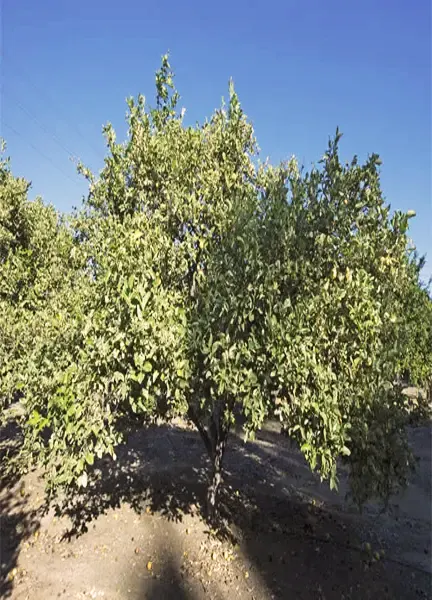
- Common Name: Variegated Pink Lemon Tree
- Botanical Name: Citrus limon ‘Eureka Variegated Pink’
- Family: Rutaceae
- Plant Type: Citrus tree
Lumber
Lumber is a versatile building material that plays a fundamental role in construction and woodworking industries. It encompasses a broad range of wood products, including boards, planks, and beams, which are typically processed from timber harvested from various tree species. Lumber serves as the backbone for countless architectural structures, furniture, flooring, and countless other applications, making it an essential component of the modern world.
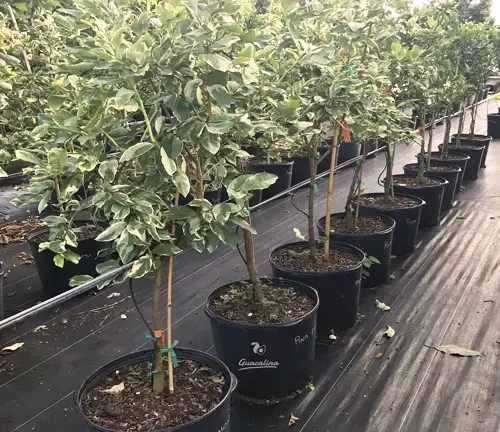
Mature Size and Growth Rate
The size and growth rate of trees are vital in lumber production. Some species grow quickly, like pine, while others, such as oak, take longer. Tree size affects the quantity and quality of lumber harvested. Sustainable forestry practices consider these factors to optimize lumber production and protect ecosystems, influenced by climate, soil, and local regulations.
Soil Type
The Variegated Pink Lemon Tree thrives in well-drained, fertile soil that is rich in organic matter. It prefers a slightly acidic to neutral soil pH level, ideally ranging from 6.0 to 7.5. Good drainage is crucial to prevent waterlogged roots, which can lead to root rot and other issues. While it can adapt to various soil types, including loamy and sandy soils, it performs best in soil that retains moisture without becoming soggy.
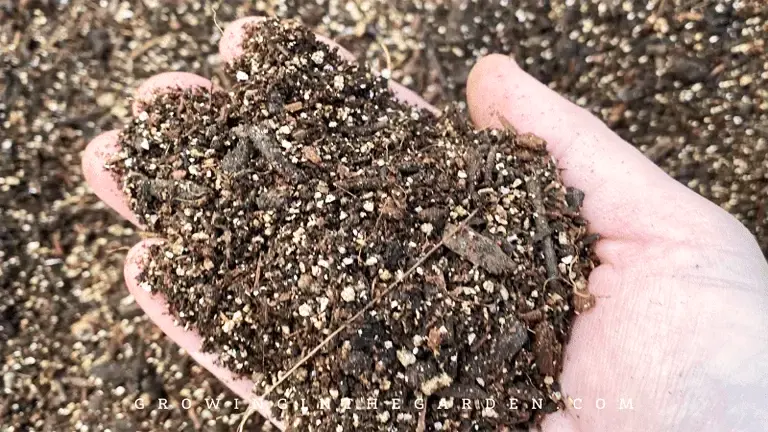
Soil Preferences
This lemon tree has a preference for soils that are not only well-draining but also consistently moist. While it can tolerate some drought once established, it generally benefits from regular watering to maintain optimal growth and fruit production. Additionally, providing a layer of mulch around the base of the tree can help conserve soil moisture, regulate temperature, and suppress weeds, creating an environment that suits the Variegated Pink Lemon Tree’s soil preferences.

Hardiness Zones
For gardeners residing in USDA zones 8 to 11, cultivating the Variegated Pink Lemon tree is hassle-free. However, in regions with colder climates, where frost is a concern, it’s advisable to plant this tree in a container equipped with casters, allowing for easy indoor relocation when the weather turns chilly. These trees exhibit drought resistance and display adaptability to a wide range of soil types.
Sun Preference
The Variegated Pink Lemon Tree thrives in full sun, requiring a minimum of 6 to 8 hours of direct sunlight daily to flourish.
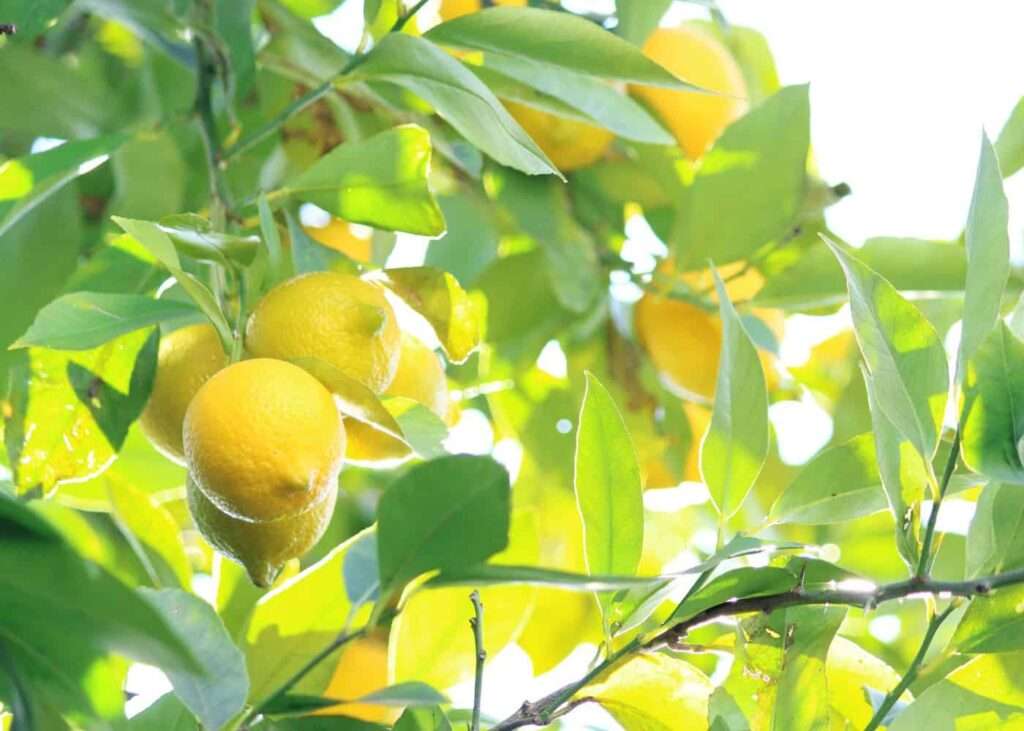
Attributes and Characteristics
This celebrated citrus tree boasts captivating variegated leaves, fragrant white blossoms, and unique pink fruits. Its glossy leaves, moderate growth to 10-20 feet, and delicious, edible pink lemons make it a standout. Careful attention is needed to safeguard it from pests and diseases. Thriving in well-drained soil and with regular maintenance, it’s a delightful addition to gardens or as a container plant for indoor and outdoor settings.
Wildlife Contribution
The Lemon tree’s blossoms serve as a magnet for bees and various pollinators, playing a crucial role in the pollination process. As the Lemon ripen, they become a valuable food source for Spider Monkey and other wildlife.
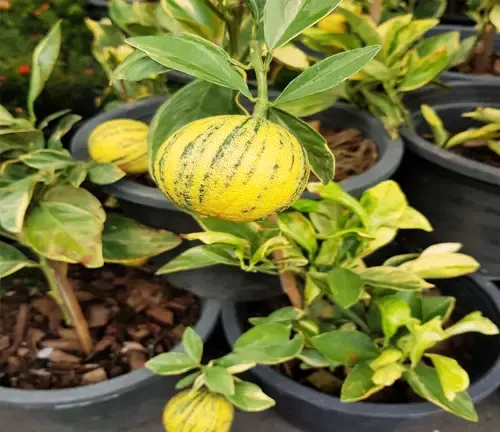
Care
To ensure the well-being of the Early Harvest Lemon tree, consistent watering is essential, particularly in dry spells. Employing a generous layer of mulch around the tree’s base aids in moisture retention and weed control. Annual pruning is a necessity to uphold its form, eliminate dead or diseased branches, and enhance air circulation. The application of organic fertilizers during both early spring and late fall fosters robust growth.
Benefits
The Variegated Pink Lemon Tree offers a host of advantages, including its striking appearance, fragrant blossoms, and unique pink fruits, which are not only visually appealing but also add a distinct citrus flavor to culinary dishes. It adapts well to various environments, making it versatile for indoor and outdoor settings, and its blossoms attract beneficial pollinators.
Invasive
This tree is not invasive; it’s a cultivated species that poses no significant threat to natural ecosystems. Responsible cultivation practices should be followed to maintain this status.
Lifespan
The lifespan of a Variegated Pink Lemon Tree varies but can extend for several decades with proper care, including regular maintenance and disease management, ensuring enduring beauty and fruit production.
Disadvantage
While the Variegated Pink Lemon Tree offers numerous benefits, it is not without its disadvantages. One notable drawback is its susceptibility to common pests and diseases that can affect its health and fruit production. Regular pest management and disease prevention measures are essential to mitigate these challenges.
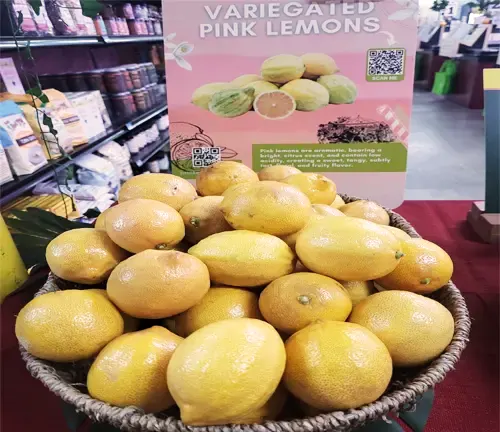
Edible or Not
The pink lemons produced by the Variegated Pink Lemon Tree are indeed edible. These unique fruits offer a delightful citrus flavor and can be used in various culinary applications, from beverages to desserts, adding a touch of both aesthetics and taste to your dishe
Habitat Requirements
The Variegated Pink Lemon Tree thrives in well-drained soil, needs ample sunlight, and does well in mild to warm climates. It’s adaptable to various soil types and can be grown indoors or outdoors.
Name Origin
The name “Variegated Pink Lemon Tree” highlights its unique features – “Variegated” refers to its striking leaves, and “Pink Lemon” describes its distinctively pink fruit.
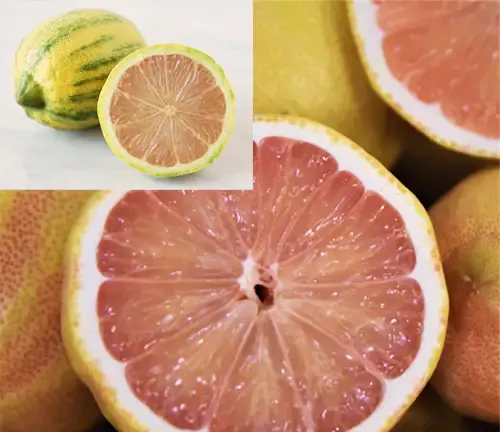
Varieties
While ‘Eureka Variegated Pink’ is a prominent cultivar, there are other Variegated Pink Lemon Tree varieties, each with slight differences in appearance and fruit production, offering choices for different preferences and growing conditions.
Pruning
Pruning the Variegated Pink Lemon Tree is essential for maintaining its shape, eliminating dead or diseased branches, and enhancing air circulation within the canopy. Regular pruning helps keep the tree healthy and promotes robust fruit production. It should be done during the tree’s dormant season, typically in late winter or early spring, to minimize stress on the tree.
Propagating
This tree is typically propagated through grafting onto rootstock to preserve its unique traits, like variegated leaves and pink fruit. While propagation from cuttings is possible, grafting is the preferred method for reliable results.
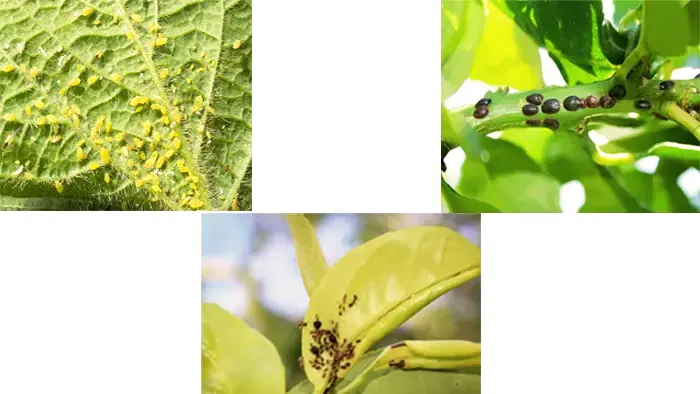
Common Pests & Diseases
Like other citrus trees, the Variegated Pink Lemon Tree is susceptible to certain pests and diseases. Common pests that can affect it include aphids, scale insects, and citrus leafminers. Diseases like citrus canker and citrus greening (Huanglongbing) can also pose a threat. Regular maintenance, proper care, and appropriate pest control measures are essential to keep this tree healthy and thriving.
Interesting Tidbits
- The Variegated Pink Lemon Tree is thought to have its roots in the United States, marking it as a unique American citrus gem.
- Among the Variegated Pink Lemon varieties, it stands out as one of the earliest to reach ripeness, typically gracing harvest tables in late July or early August.
- Its vibrant yellow skin acts like a beacon amid the tree’s foliage, making these lemons easy to spot as they ripen to perfection.
- When it comes to culinary delights, Variegated Pink Lemons are often chosen for creating mouthwatering applesauce and delectable apple pies, thanks to their exceptional texture when cooked.
Discover the difference today and explore our range of Forestry Services – don’t miss out on the opportunity to elevate your experience!
Frequently Asked Questions (FAQs)
- Can I eat the pink lemons from the Variegated Pink Lemon Tree?
Yes, the pink lemons from this tree are edible and have a similar flavor to traditional yellow lemons. They can be used in a variety of culinary applications, such as making lemonade, desserts, or adding a unique twist to your dishes. - How do I care for a Variegated Pink Lemon Tree?
This tree requires well-drained soil, regular watering, and adequate sunlight. Pruning may be necessary to maintain its shape and remove dead or diseased branches. Fertilizing with a balanced citrus fertilizer/ash can also help promote healthy growth. - Can I grow a Variegated Pink Lemon Tree indoors?
While it’s possible to grow this tree in a large of best container indoors, it’s essential to provide it with plenty of sunlight, preferably through a sunny window or supplemental grow lights. Indoor citrus trees may not produce as much fruit as those grown outdoors but can still be a beautiful addition to your home. - Are Variegated Pink Lemon Trees cold-hardy?
These trees are not particularly cold-hardy and are best suited for USDA hardiness zones 9-11. In colder climates, they can be grown in containers and brought indoors during the winter months to protect them from frost. - How often does the Variegated Pink Lemon Tree bear fruit?
This tree typically produces fruit year-round, with peak fruiting occurring during the warmer months. However, the exact fruiting pattern may vary based on growing conditions and care.
In summary, the Variegated Pink Lemon Tree is a remarkable citrus variety known for its visually striking appearance, fragrant blossoms, and unique pink fruit. With proper care and attention, it can thrive as an ornamental and fruitful addition to your garden or indoor space. However, it’s essential to be aware of potential pests and diseases and take steps to protect this beautiful tree.



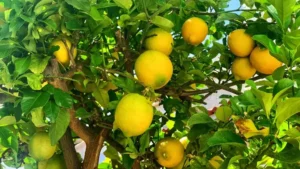
Leave your comment